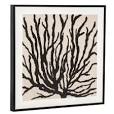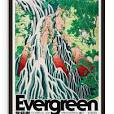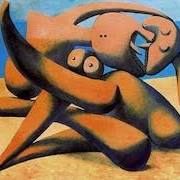The Power of Visual Art: A Window to the Soul
Visual art has a unique ability to communicate complex emotions, ideas, and stories without the need for words. Through colors, shapes, textures, and forms, artists can create a visual language that speaks directly to the soul of the viewer.
One of the most captivating aspects of visual art is its ability to evoke strong emotional responses. A painting, sculpture, or photograph has the power to stir feelings of joy, sadness, awe, or contemplation in those who experience it. The beauty of visual art lies in its capacity to transcend language and cultural barriers, connecting people on a deeply emotional level.
Moreover, visual art serves as a mirror reflecting the artist’s inner world. Each brushstroke or sculpted line is a glimpse into the artist’s thoughts, feelings, and experiences. Through their creations, artists invite viewers to see the world through their eyes and feel what they feel.
Visual art also has the power to provoke thought and inspire change. By addressing social issues, political themes, or personal struggles in their work, artists can spark conversations and challenge perspectives. Art has the potential to ignite activism, raise awareness, and promote empathy among individuals from diverse backgrounds.
Ultimately, visual art is a universal language that transcends boundaries and unites people through shared experiences and emotions. It has the power to uplift spirits, provoke introspection, and foster connections between individuals across time and space.
So next time you find yourself standing in front of a painting or sculpture, take a moment to immerse yourself in its beauty and let it speak to your soul. You may be surprised by the profound impact that visual art can have on your life.
7 Essential Tips for Creating Impactful Visuals
- Use contrasting colors to make important elements stand out.
- Maintain visual hierarchy to guide the viewer’s attention.
- Choose fonts that are easy to read and complement your design.
- Incorporate white space to avoid a cluttered look.
- Ensure consistency in design elements throughout your visuals.
- Consider the emotional impact of colors on your audience.
- Use imagery and graphics strategically to enhance understanding.
Use contrasting colors to make important elements stand out.
Using contrasting colors is a powerful technique in visual design to make important elements stand out. By pairing colors that are opposite on the color wheel, such as black and white or blue and orange, you create a dynamic visual impact that draws the viewer’s attention to specific areas of your design. The stark contrast between these colors creates a sense of vibrancy and helps highlight key elements, making them more visually striking and memorable. Whether in graphic design, painting, or photography, mastering the art of contrasting colors can elevate your work and enhance its effectiveness in capturing the viewer’s gaze.
Maintain visual hierarchy to guide the viewer’s attention.
Maintaining visual hierarchy is a crucial aspect of effective design, as it helps guide the viewer’s attention and create a sense of order within the composition. By strategically arranging elements based on their importance, size, color, and placement, designers can direct the viewer’s gaze towards key focal points and ensure that the message or story is communicated clearly. This intentional organization of visual elements not only enhances the overall aesthetics of a design but also improves readability and user experience, making it easier for viewers to navigate and engage with the content.
Choose fonts that are easy to read and complement your design.
When creating visual content, it is essential to choose fonts that are not only visually appealing but also easy to read and complement your overall design. Selecting the right fonts can significantly impact the readability and aesthetic appeal of your work. Opt for fonts that are clear, legible, and appropriate for the tone and message you want to convey. By carefully selecting fonts that enhance your design while ensuring readability, you can create visually engaging content that effectively communicates your message to your audience.
Incorporate white space to avoid a cluttered look.
When creating visual designs, incorporating white space is essential to avoid a cluttered look. White space, also known as negative space, helps to balance elements on a page and allows the eyes to rest, enhancing overall readability and visual appeal. By strategically using white space around text, images, and other design elements, designers can create a sense of elegance, simplicity, and sophistication in their work. Embracing white space not only improves the aesthetics of a design but also enhances the user experience by guiding attention to key elements and promoting clarity in communication.
Ensure consistency in design elements throughout your visuals.
Ensuring consistency in design elements throughout your visuals is crucial for creating a cohesive and professional look. By maintaining uniformity in aspects such as color schemes, typography, imagery style, and layout structure, you can establish a visual identity that is easily recognizable and memorable to your audience. Consistency helps to reinforce brand recognition, build trust with viewers, and enhance the overall aesthetic appeal of your designs. Whether it’s for a website, social media graphics, or marketing materials, staying consistent in design elements will elevate the impact of your visuals and convey a sense of reliability and professionalism.
Consider the emotional impact of colors on your audience.
When creating visual art, it is essential to consider the emotional impact of colors on your audience. Colors have the power to evoke specific feelings and moods, influencing how viewers interpret and connect with your work. By strategically choosing colors that resonate with the emotions you wish to convey, you can enhance the overall impact of your art and create a more immersive experience for your audience. From calming blues to passionate reds, each color carries its own emotional significance, allowing you to communicate effectively and evoke a powerful response from those who engage with your artwork.
Use imagery and graphics strategically to enhance understanding.
When aiming to enhance understanding, utilizing imagery and graphics strategically can be a powerful tool. Visual elements such as images, charts, and diagrams can effectively complement written or verbal information, making complex concepts more accessible and engaging for the audience. By incorporating relevant visuals, one can reinforce key points, clarify relationships between ideas, and stimulate visual learners’ comprehension. Thoughtfully selected imagery not only enhances understanding but also adds depth and richness to the overall communication, creating a more immersive and memorable experience for the viewers or readers.




